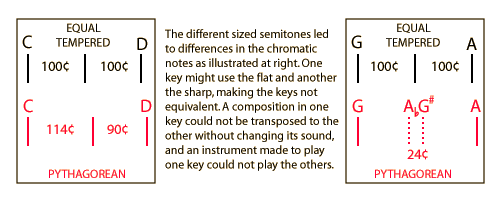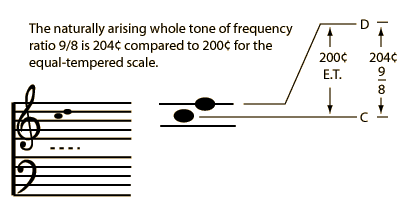Pythagorean Temperament
A pentatonic musical scale can be devised with the use of only the octave, fifth and fourth. It produces three intervals with ratio 9/8 and two larger intervals. If a 9/8 (whole tone) interval is carved out of the larger ones, a smaller (semitone) interval is left: B-C and E-F. This creates a Pythagorean diatonic scale. If the semitone thus created is taken from the whole tone, a chromatic semitone of different size is left over. This leads to some of the difficulties of Pythagorean temperament and other temperaments - such difficulties ultimately led to the development of equal temperament.

| The whole tone | Circle of fifths |
Musical scales
| HyperPhysics***** Sound | R Nave |


